If you thought Diwali treats begin and end with pedas and jalebis, go look what's cooking in Sindhi, Marwari, Gujarati, Kashmiri and Punjabi kitchens on India's big festive day. Anju Maskeri takes a peek
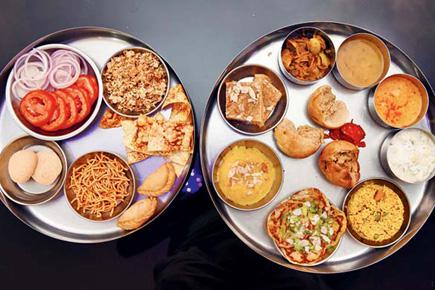
Kashmiri
On the platter: Halwa poori, Tsok Wangun, Chaman Qaliya and Mithi Poori
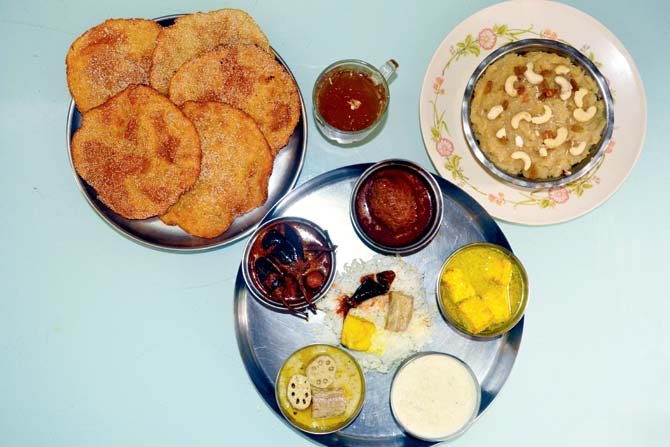
ADVERTISEMENT
While living in Srinagar in the '80s, Sunil Mattoo, chef and owner of Oshiwara's KongPoush, recalls how Diwali festivities meant churning out sweets over and above what was required for their two mithai shops. "We would prepare halwa, made with semolina, sugar and ghee and serve it with pooris or flatbreads, made of refined flour and salt and deep-fried in oil," he says.
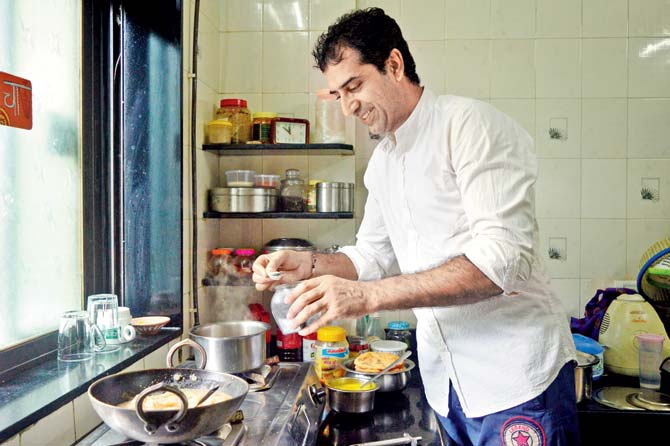
Sunil Mattoo prepares a Kashmiri spread. Pic /Falguni Agrawal
Apart from this, the family would make Chaman Kaliya or paneer in spiced milk curry. Atleast 100 extra pooris were rolled out to distribute among neighbours. "The religion never mattered," he says.
Sindhi
On the platter: Thandai, Bhee Tikki, Sai bhaji, Bhugah Chawal, Aloo and Bhindi chips, Koki, Papad, Chutney and Mithi Dabal
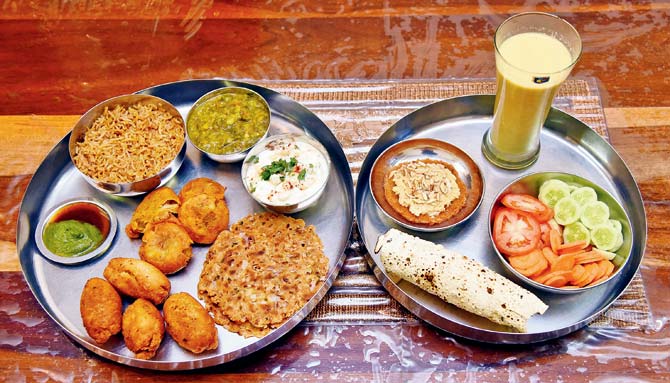
Rashmi Punjabi, an HR professional, started preparing Diwali treats when she was 16 under the watchful eye of her maternal grandmother Indra Mehra. The spread, she recalls, as sumptuous and never short of 10 items. "I've toed the line. I start with a welcome drink, Thandai, and move on to starters like Bhee Tikki.
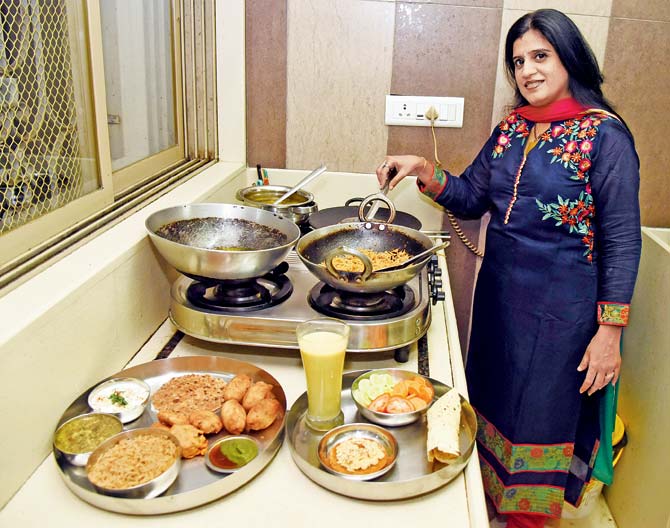
Rashmi Punjabi with her mother-in-law, Mala. Pics /Shadab Khan
These are deep-fried lotus stems and potato cakes." The Saibhaji is a healthy contrast with a potpourri of greens, lentils and spices. But the dish that tries her patience is the Mithi Dabal or sweet bread, a popular dessert in most Sindhi homes.
Punjabi
On the platter: Panjiri, Meethe Chawal, Gur Paare and Petha
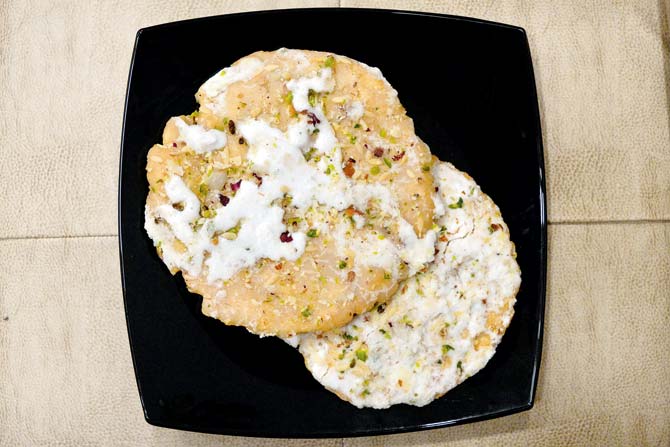
Meethi Mathri. Pic/ Falguni Agrawal
The Puri household knows that Diwali is here when Vanshika Puri, a French patisserie owner, puts fusion desserts on the backburner and rolls out traditional mithai. The platter usually includes Panjiri, a dry sweet made with whole wheat flour and ghee; Meethe Kesar Chawal or sweet rice cooked with whole garam masala and dried fruits made in the evening on Laxmi puja; Gur Paare, crisp jaggery snacks and Petha, a translucent soft candy.
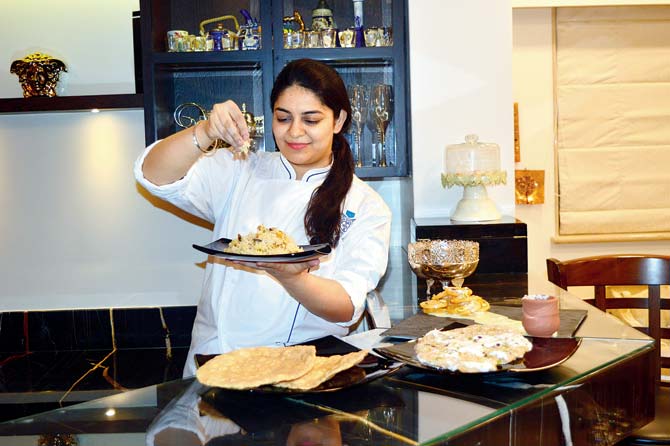
Vanshika Puri prepares traditional Punjabi mithai at her Juhu home
"I learnt most of the preparations when growing up. I think it's the heady aroma of these sweets that may have inspired me to turn to desserts," says the Le Cordon Bleu graduate.
Gujrati
On the platter: Cholafali, Mathiya, Nylon Chevdo and Badampuri

Although a Rajasthani, chef and food consultant Neha Mathur picked up the nuances of festive Gujarati preparations when she was a teenager, thanks to her neighbours. "They hailed from Ahmedabad and would prepare exotic fare from Gujarat, especially during festivals. Considering I loved cooking, they were happy to teach me." And so, every Diwali, apart from the Marwari spread, Mathur makes a portion of Amdavadi specialities like Nylon Chevdo and Badampuri.
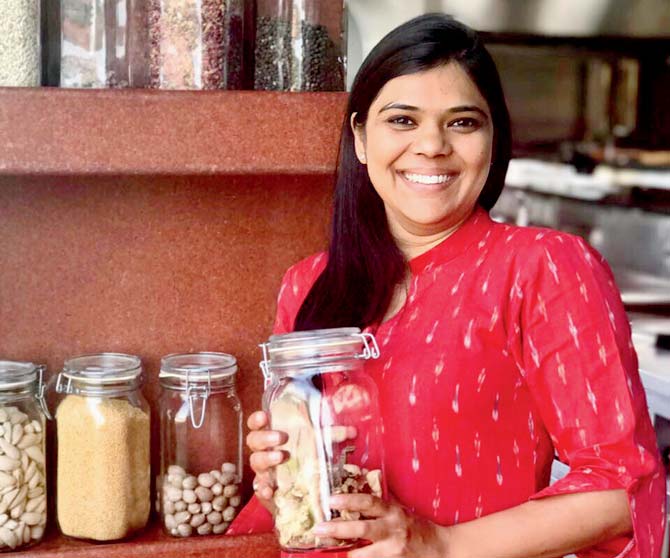
"The difference between Marwari and Gujarati cuisine is that the former uses a lot of ghee and dry fruits. Gujarati food is lighter on the stomach," she explains. She, like her former neighbours, calls the snack items 'naasto' and loves that they can be eaten anytime of the day. The Mathiya and Cholafali, she admits, are the toughest to nail. "The dough for both items is a mixture of two flours. So, the ratio has to be correct. And it requires deft kneaded. But the crisp result is worth it," says Mathur.
Marwari
On the platter: Gatte Ki Sabzi, Gatte Ka Pulav, Boondi Raita, Moong Dal Sheera and Malapua
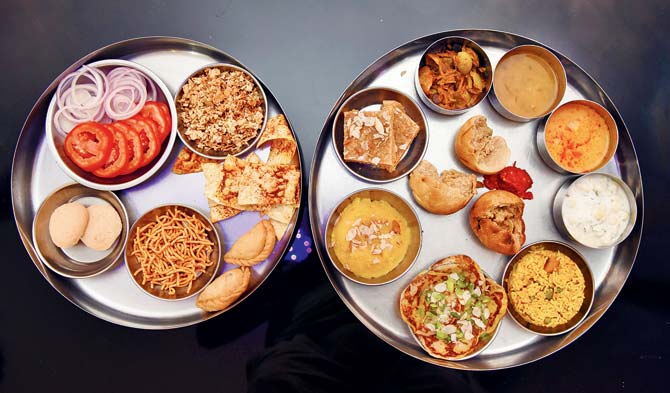
ON Diwali, Prema Jain and her sister-in-law Kalpana are up at the crack of dawn to prepare a lavish lunch. "Traditional Rajasthani cuisine uses a lot of gram flour because it's abundantly available and a wheat-free product that's rich in fibre and nutrients," says Kalpana. All members of the large joint family split tasks, right from buying groceries to chopping vegetables and the final plating.
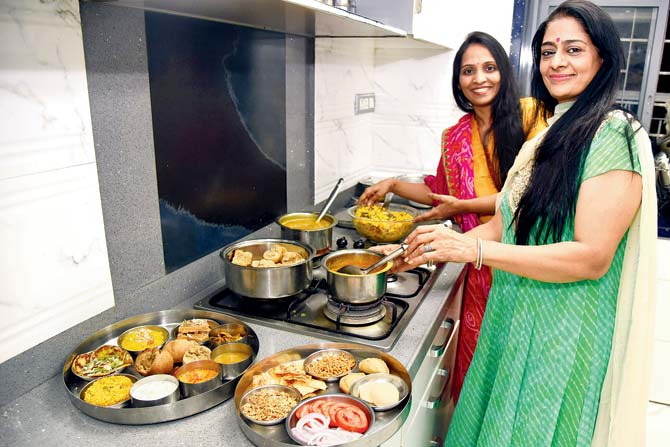
Kalpana Jain and sister-in-law Prema.
While the ladies follow traditional cooking for the special day, the sinful dessert that is the malpua has been toned down to keep calories in check. "It's deep fried, usually, but we prepare it like a thin pancake, pan fried with minimal oil. We can't afford to be decadent," Prema laughs.
 Subscribe today by clicking the link and stay updated with the latest news!" Click here!
Subscribe today by clicking the link and stay updated with the latest news!" Click here!







